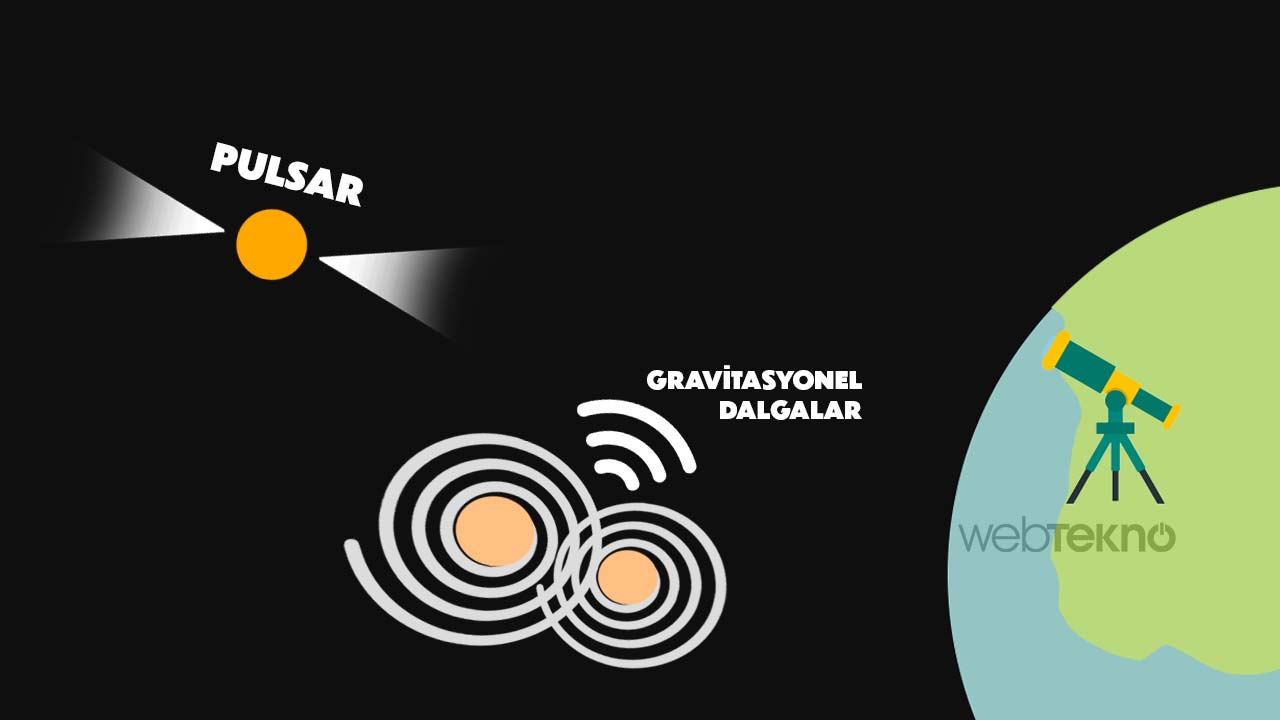For the first time, scientists have observed giant “gravitational waves” that are causing the already warped spacetime to bend even more.
A historical discovery has been announced recently about the universe, about which humanity still produces huge theories. North American Nanohertz Gravitational Waves Observatory (NANOGrav)for the first time in history formed by the collision of two galaxies “gravitational waves‘ was able to observe.
Before going into details, it is useful to summarize simply so that you do not lose interest: We can say that concrete evidence of ripples similar to sea waves in space has been observed for the first time. According to Professor Michael Kramer, speaking to the BBC, the discovery has has the potential to change their ideas about the universe.
What is this discovery?
The discovery took place thanks to two distant galaxies starting to merge. The supermassive black holes at the center of these galaxies are also approaching each other along with the galaxies. This is what enables exploration. convergence of two supermassive black holes it happened.
The main focus of the NANOGrav team is ‘dead stars’, which emit electromagnetic radiation continuously from their magnetic poles, i.e. two points, to the universe.pulsars‘ was. The team is constantly monitoring and recording the pulsars’ signals. He has observed 79 pulsars so far.
Until now, no time difference has been observed between the radiations emitted by pulsars, which we can think of as lighthouses in space, to the universe. Radiation from these structures It was as precise and orderly as a clock.
But the data obtained from the radiations of one pulsar was very different from the others. Unlike the others, the radiations detected by the telescopes on earth did not have a fixed order. This is in space an indication that something is disturbing the order was.
Here was the source of that sign, two galaxies merging:

The NANOGrav team attributed the source of the irregularity between Earth and pulsar radiation to two merging galaxies. The convergence of supermassive black holes at the center of these galaxies gigantic gravitational waves was thrown into space.
However, the main source is still these two galaxies. cannot be said clearly. Just guessing. Because a source that would spread such a big wave and cause disorder has not been observed yet.
The discovery of the NANOGrav team, 15 years and was a result of data from 68 observed pulsars.
But what are these “gravitational” waves?
You’ve probably heard the idioms like space-time ‘bend’. Galaxies, stars and all kinds of massive structures can cause warping in space-time, which we can embody as a sheet. Even the effects of this bending We can even see it in space photographs:
RELATED NEWS
Why Do Galaxies Look ‘Skewed’ in the First Photo Taken by the James Webb Space Telescope?
Here, the gravitational waves represent waves similar to the waves in the ocean, which further bends this already bent sheet. The existence of these waves was discovered in 1916. It was predicted by Albert Einstein.
The first discovery of gravitational waves took place in 2015. The team that made this discovery managed to win the Nobel Science Prize for their discovery in 2017.
One thing we know has now changed:
Until now, the scientific world assumed that the gravitational waves produced by the collision of two black holes were quite small. But with the latest discovery, that thinking is about to change.
It is now known that giant gravitational waves will form when two giant black holes come close to each other.
What is the significance of the latest discovery?
It would be more useful to read the importance of the new discovery from the words of Professor Michael Kramer, one of the scientists involved in the research:
“It can tell us whether Einstein’s theory of gravity is wrong; it can tell us what the mysterious things that make up most of the Universe, dark matter and dark energy, really are, and offer us a new window into new theories of physics.”
